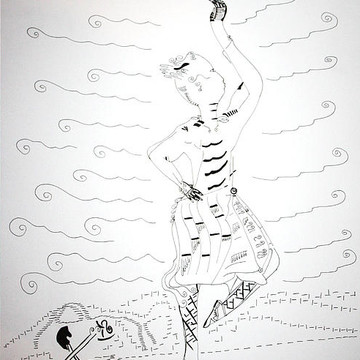20% off all products! Sale ends tonight at midnight EST.
Joined
2009
Followers
380
Visitors
1,454,349

Highland Dance
There are essentially three different styles of Scottish traditional dance: ceilidh dancing, country dancing and Highland dancing. Ceilidh Dancing Ceilidh dancing is the most accessible form of our traditional dancing. The basic dances are all fairly easy to master, are few in number and comprise mostly round-the-room and set dances. The emphasis is firmly on having fun and being sociable - there is none of the regulation and competition that marks the other forms of traditional dance and the dress-code is invariably 'come-as-you-are'. Key ingredients of a good ceilidh include enthusiasm, a good band, and usually - but not essentially - drink. Ceilidh dancing is taught to schoolkids across the country so most Scots grow up with it, which is no doubt why it's a regular feature of weddings and other social gatherings, such as Burns Suppers. In the past decade or so, however, Glasgow and Edinburgh have witnessed an explosion in the ceilidh's popularity as a weekend entertainment and have seen a number of ceilidh clubs emerge. Scottish Country Dancing Scottish country dancing is much more organised affair than ceilidh dancing. The dances involve combinations of up to five couples, usually arranged in lines facing each other or in squares, moving through a repeating series of prescribed steps and movements which eventually ends with all the dancers back in their original formation. Individual dances - of which there are literally thousands, with new ones being created all the time - are often quite intricate and require a fair degree of technique, mobility and grace. Unlike the freeform ceilidh dancing, Scottish country dancing is strictly regulated and standardised. Under the watchful gaze of the Royal Scottish Country Dance Society, the form and movements of each dance are agreed and published so that its 25,000 members across the globe learns the authorised version. While this may stifle individual creativity, it does allow people to come together from all over the world and enjoy the common language of dance. Reeling is a distinct style of dancing which is related to country dancing. Many reels are in fact danced by the RSCDS but their style is more robust and rolling than the stylised set forms of the Society's main repertoire. It is most often found in the relatively closed communities of the military and the aristocracy. Highland Dancing Unlike ceilidh and country dancing, Highland dancing is performed competitively, usually by youngsters. The dances are mostly solo performances, where the emphasis is on the precise execution of intricate footwork. The standard of competitive performance is very high and thanks to a number of regulatory bodies in different countries, competitions often have an intenational flavour. The Highland Fling and the Sword Dance are well-known examples of the style which is a regular feature of Highland Games everywhere.